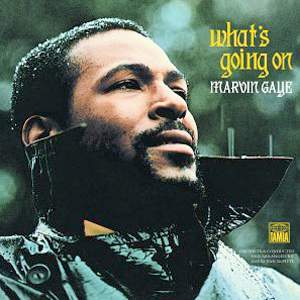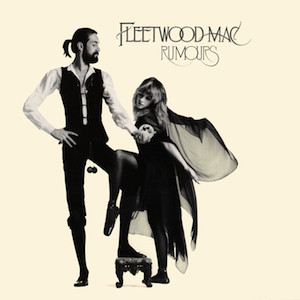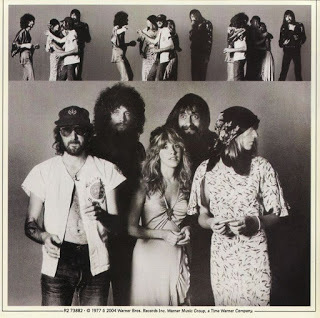Have No Fear, Audiophiles
 Audiophiles will put on Dark Side and listen for flaws. Not to belittle them, but to relish in them, to find what's hidden and captured unexpectedly (like The Beatles' "Day Tripper" in "Eclipse" or the odd warping sound in the very last seconds of "The Great Gig in the Sky"). That kind of attention to detail is why most audiophiles (like me) find little to their satisfaction with today's popular music. No doubt Radiohead and Muse, Fleet Foxes and Lord Huron will satisfy the audiophile's desires, but most modern music is mastered to sound loud even when played at low volumes – a compressed dynamic range means that there's not much difference in decibels between the quiet and loud parts of the music. Listening to these albums through high quality audio gear can be a horrific assault on the senses, which is why audiophiles seek out albums that have been mastered with a wider dynamic range (forget that most rap is clichéd couplets set amidst a lack of instrumentation – but I digress). The 90s are the era I enjoy the least, based on its mediocrity and the sparsity of great music (Radiohead and a small handful of others noted as the exception), but I'm good with the teens (is that what our era is called?), loving the new focus on Americana (The Roosevelts, Sun Kil Moon, Midlake, even Neil (forever) Young) and alt. bands like Andrew McMahon in the Wilderness or Empire of the Sun. But the world of digital downloads and MP3s has done a number across the board in terms of the audiophile – fear not, AM is here to help. Got that new vacuum tube based receiver and a turntable from Shinola? Here’s a handful of essentials.
Audiophiles will put on Dark Side and listen for flaws. Not to belittle them, but to relish in them, to find what's hidden and captured unexpectedly (like The Beatles' "Day Tripper" in "Eclipse" or the odd warping sound in the very last seconds of "The Great Gig in the Sky"). That kind of attention to detail is why most audiophiles (like me) find little to their satisfaction with today's popular music. No doubt Radiohead and Muse, Fleet Foxes and Lord Huron will satisfy the audiophile's desires, but most modern music is mastered to sound loud even when played at low volumes – a compressed dynamic range means that there's not much difference in decibels between the quiet and loud parts of the music. Listening to these albums through high quality audio gear can be a horrific assault on the senses, which is why audiophiles seek out albums that have been mastered with a wider dynamic range (forget that most rap is clichéd couplets set amidst a lack of instrumentation – but I digress). The 90s are the era I enjoy the least, based on its mediocrity and the sparsity of great music (Radiohead and a small handful of others noted as the exception), but I'm good with the teens (is that what our era is called?), loving the new focus on Americana (The Roosevelts, Sun Kil Moon, Midlake, even Neil (forever) Young) and alt. bands like Andrew McMahon in the Wilderness or Empire of the Sun. But the world of digital downloads and MP3s has done a number across the board in terms of the audiophile – fear not, AM is here to help. Got that new vacuum tube based receiver and a turntable from Shinola? Here’s a handful of essentials.Marvin Gaye's What's Going On?
Marvin Gaye's brother's experiences in the Vietnam War and the widespread social injustice in America in the early 70s led Gaye to slough off his lover’s image and record a concept album, the first for a black artist in pop music, about the shape of civilization. All of its songs flow into one another, ending with a reprise of its opening theme, all the better to tell the story of a Vietnam veteran who has come home from war to see his country in a new and disappointing light. Gaye tackles poverty, drug addiction and even environmental issues, not through angry political tirades, but as a man who believes that love is the answer. As a recording, the album exhibits a rare sonic spaciousness, with each layer, counterbalancing its blues, jazz and soul underpinnings. Listen on remastered vinyl if at all possible. This isn’t a sonic space-scape from which we expect hi-fidelity (like Close to the Edge), but one of the best examples of how all music should sound. This is the music, like Stevie Wonder's Innervisions, that serves as the best aural example of living in the inner city.
 Fleetwood Mac's Rumours
Fleetwood Mac's RumoursRumours' meta-story is set amongst two intra-band breakups and rampant cocaine consumption, a veritable soap opera; so much so that at a concert I attended in Santa Barbara, the band got through just three songs before Stevie stumbled off the stage in cocaine-induced stupor, the concert postponed.
Rumours is essentially an unhappy love story with a happy ending. In the end, what you had was a masterpiece of pop. To date, the LP has moved more than 50 million copies worldwide, making it one of the biggest-selling albums of all time. Aside from the pop-hit formula prevalent with each track, the recording is a sonic triumph. Interestingly, its popularity led to the production of Tusk, not as good an LP by half, but one of the greatest produced and mastered LPs of all time. Listen to either and find hi-fidelity in its purest form.
 While the songwriting and performances were obviously central to the album's success, the production and engineering cannot be discounted. "We had a lot of time to dial everything in, and the band members were incredibly tolerant," Engineer, Ken Caillat said. "But then again, if you think about how we started, with them asking us to be their ears, that was just a natural progression [At just 21, Caillat was a bit put off at first to be working with a band of Fleetwood Mac’s stature]. When we were recording Rumours, Christine would ask, 'How does everything sound, Ken? Did you like this take better than that take?' and sometimes I'd say, 'Y'know, Chris, I'm having trouble hearing the keyboard and the guitar.' The first time I said that, I didn't really know what I meant, but she said, 'Oh... Yeah, you're right, Ken. We're playing in the same register. Why don't I invert the keyboard down a third and get out of Lindsey's way?' Which is what she did and it worked brilliantly. After that I'd go, 'Hey, you know, you two guys are playing in the same spot. One of you should go up or down, so let's figure out who's going to take which frequency.'"
While the songwriting and performances were obviously central to the album's success, the production and engineering cannot be discounted. "We had a lot of time to dial everything in, and the band members were incredibly tolerant," Engineer, Ken Caillat said. "But then again, if you think about how we started, with them asking us to be their ears, that was just a natural progression [At just 21, Caillat was a bit put off at first to be working with a band of Fleetwood Mac’s stature]. When we were recording Rumours, Christine would ask, 'How does everything sound, Ken? Did you like this take better than that take?' and sometimes I'd say, 'Y'know, Chris, I'm having trouble hearing the keyboard and the guitar.' The first time I said that, I didn't really know what I meant, but she said, 'Oh... Yeah, you're right, Ken. We're playing in the same register. Why don't I invert the keyboard down a third and get out of Lindsey's way?' Which is what she did and it worked brilliantly. After that I'd go, 'Hey, you know, you two guys are playing in the same spot. One of you should go up or down, so let's figure out who's going to take which frequency.'"The prime example of Rumours ' excellence in terms of composition, arrangement, performance and sonic clarity was 'Go Your Own Way', whose complex drums originated in a discussion between Richard Dashut and Lindsey Buckingham that Ken Caillat overheard while driving them to the Sausalito studio one morning. "We knew we were going to record 'Go Your Own Way', and so when we got to the studio Lindsey cut the track with an acoustic guitar," Caillat recalls. "Then he asked Mick to play these drums that had the big tom fills, and although Mick couldn't quite get it, he 'Fleetwoodized' it, doing the best that he could to duplicate the Stones' ["Street Fighting Man"]. It was that kind of studio experimentation, and a bit of fortune that created this unexpected jewel. Possibly the finest "pop" LP ever made.
 Steely Dan's Aja
Steely Dan's AjaDonald Fagen and Walter Becker are nothing short of slaves to perfection when it comes to recording and mastering; consequently, every Dan LP is an audiophile's dream. Aja was the third Steely Dan album since songwriters Becker and Fagen nixed the fixed band format in 1974, preferring the insular comfort of L.A. studios, recording their compositions with a loose network of session musicians and jazz giants. As a result, the framework of their music shifted to a clean and calculated mutation of various rock, pop and jazz idioms. Aja is filled with complex horn charts, synthesizers and lush background vocals that flirt with schmaltzy L.A. jazz riffs or Ray Conniff LPs. When it comes to the title track, it's the kind of production that Brian Wilson could only dream about when making "Good Vibrations." It is the single most aurally perfect song in the rock canon.
Each song on the album is a classic in its own right. You've heard them even if you think you never have. The tracks decorate the airwaves in every department store, elevator, classic rock radio station, and grocery store one can imagine. Try to resist if you will, but the Dan's sound is as much a part of the social fabric of America as that fearless excavation on Magnolia Boulevard or the hot dog man on the cover of Pretzel Logic. Aja may just steal Dark Side's thunder as the greatest LP ever produced.
 Joni Mitchell's Blue
Joni Mitchell's BlueI can go on and on about Blue, from my personal experiences in Jay and the Americans to the stripped down acoustic quality of the LP, it is another of my go-to LPs. But I don't have to. Here one will find a different kind of aural perfection. The LP is reasonably unadorned, with most of the LP filled with nothing more than Joni's piano and oddly tuned guitar, but Blue is raw in its approach and hi-fidelity will reveal every squeak of the guitar strings and even the pedals of the piano; the dynamic range is impeccable.
Published on August 12, 2018 05:47
No comments have been added yet.



